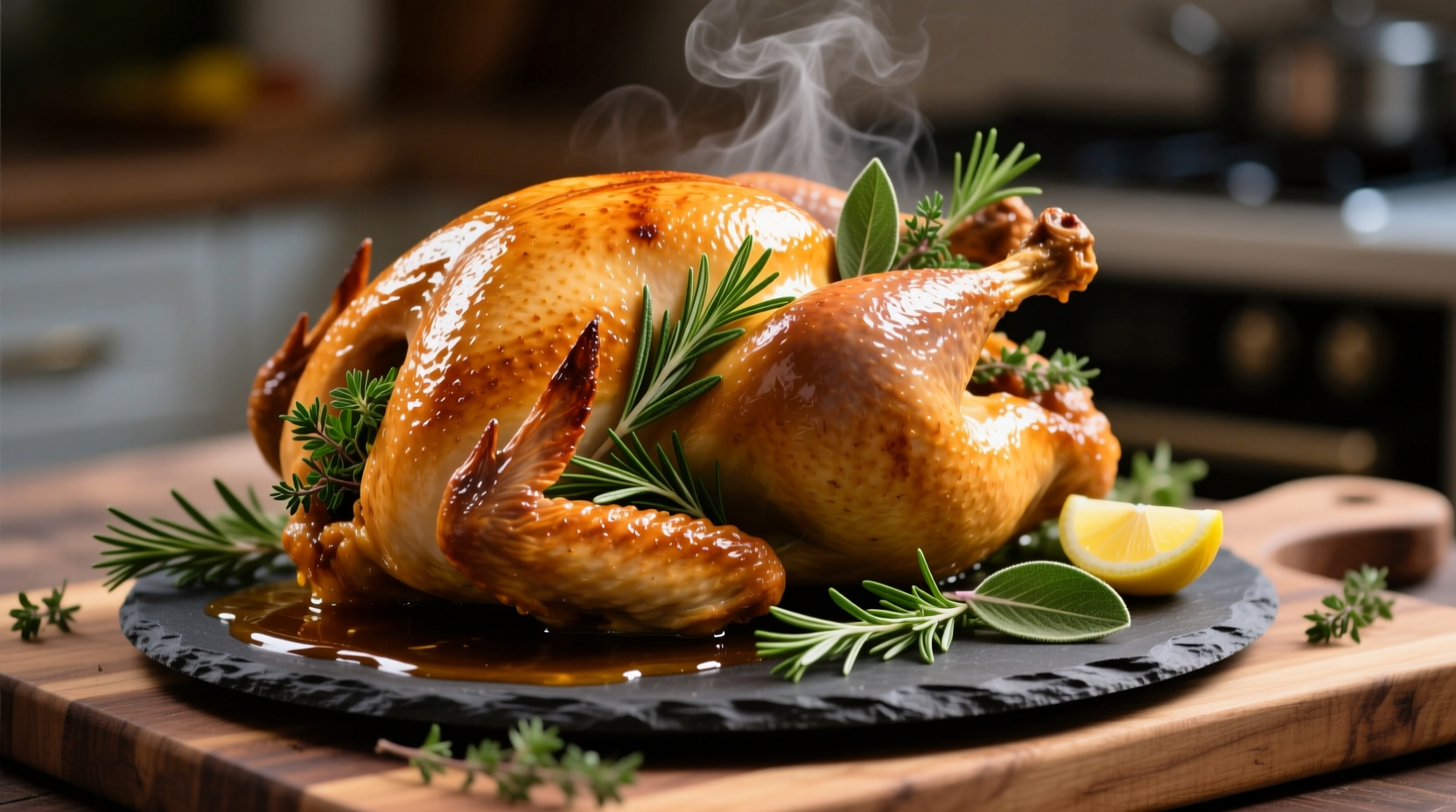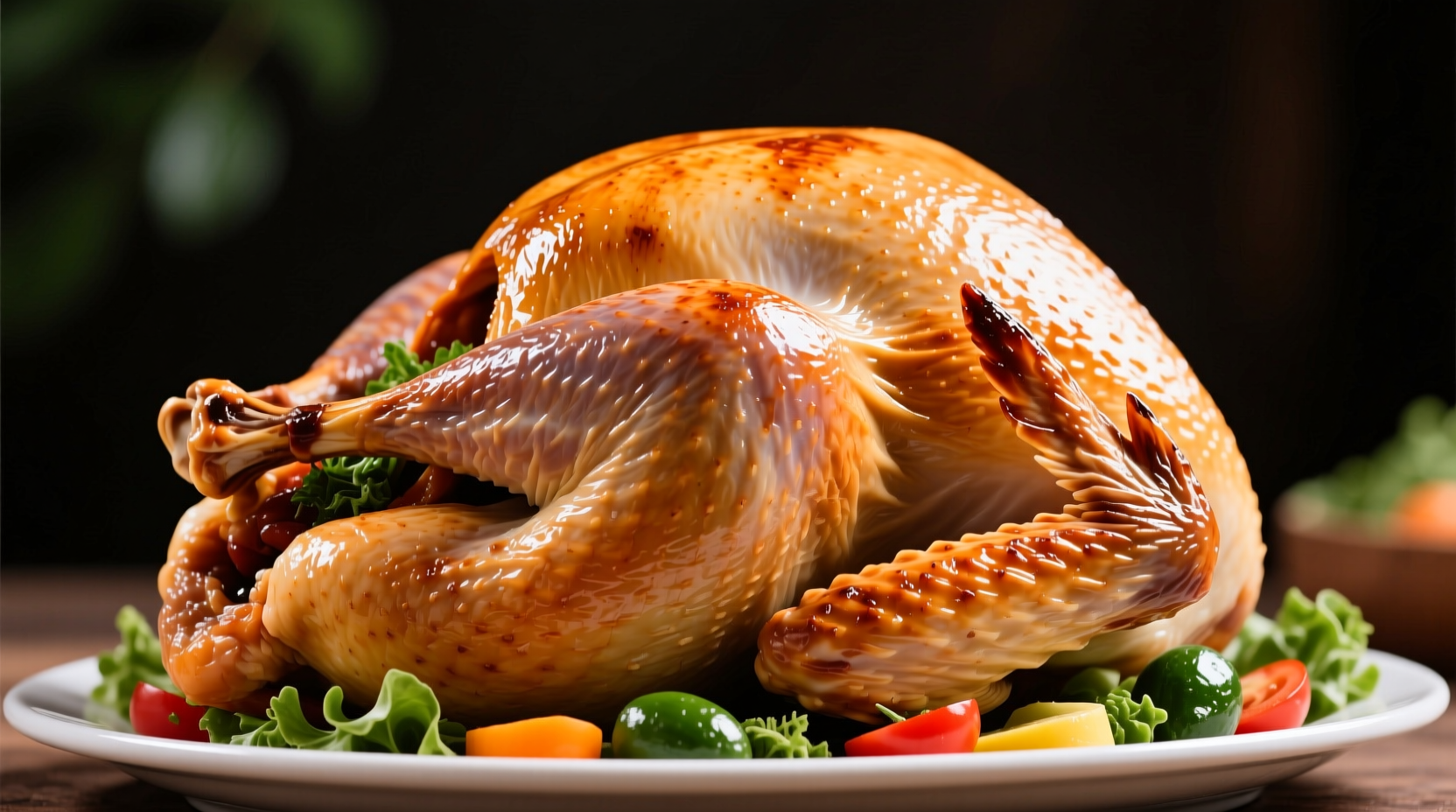Planning your holiday centerpiece? Getting the cooking time right for your 16-pound turkey is crucial for both food safety and achieving that perfect juicy texture. Many home cooks struggle with timing this centerpiece dish correctly, but with precise guidelines and a few expert techniques, you'll serve a perfectly roasted bird every time.
Understanding Turkey Cooking Fundamentals
Cooking a turkey isn't just about timing—it's about understanding heat transfer, food safety principles, and how turkey size impacts cooking duration. The USDA Food Safety and Inspection Service confirms that poultry must reach 165°F internally to eliminate harmful bacteria like salmonella. This critical temperature applies regardless of cooking method or turkey size.
Pre-Cooking Planning Essentials
Before your turkey even enters the oven, proper planning ensures success. Consider these factors that directly impact your final cooking time:
- Thawing status: A fully thawed turkey cooks more evenly and requires less time than a partially frozen bird
- Oven accuracy: Calibrate your oven thermometer—many home ovens run 25°F hotter or cooler than displayed
- Rack position: Middle rack placement ensures optimal heat circulation
- Pan selection: Dark roasting pans absorb more heat than shiny ones, potentially reducing cooking time by 10-15 minutes
| Weight Range | Unstuffed (325°F) | Stuffed (325°F) |
|---|---|---|
| 8-12 lbs | 2¾-3 hours | 3-3½ hours |
| 12-14 lbs | 3-3½ hours | 3½-4 hours |
| 14-16 lbs | 3½-4 hours | 4-4½ hours |
| 16-20 lbs | 4-4½ hours | 4½-5 hours |
Source: National Turkey Federation cooking guidelines, verified by USDA Food Safety and Inspection Service standards
Step-by-Step Cooking Process for Your 16 lb Turkey
Preparation Phase (30-45 minutes)
Remove giblets and neck from cavity. Pat the turkey completely dry with paper towels—this critical step promotes better browning. Season generously with salt, pepper, and your preferred herbs. For enhanced flavor, gently loosen the skin and rub seasoning directly onto the breast meat. If stuffing, fill loosely (no more than ¾ full) as stuffing expands during cooking.
Roasting Phase (3-3½ hours)
Place turkey breast-side up on a rack in a shallow roasting pan. Insert an oven-safe meat thermometer into the thickest part of the thigh, avoiding bone contact. Roast at a consistent 325°F. After 2 hours, check temperature and tent the breast with foil if browning too quickly. Basting every 45-60 minutes helps maintain moisture but adds 5-10 minutes to total cooking time each time you open the oven.

Doneness Verification (Critical Step)
When the thermometer reads 160-162°F in the thigh, remove turkey from oven—the temperature will continue rising during resting. Never rely solely on pop-up timers, as they often trigger before the bird reaches safe temperature. Check multiple locations: breast (165°F), thigh (165°F), and stuffing if used (165°F).
Resting: The Secret to Juicy Results
Resist the urge to carve immediately! Let your turkey rest, tented loosely with foil, for 20-30 minutes. This crucial step allows juices to redistribute throughout the meat. During this time, the internal temperature typically rises another 5°F while the muscle fibers relax, resulting in significantly juicier meat. Cutting too soon releases precious juices onto your cutting board rather than staying in the meat.
Troubleshooting Common Cooking Issues
Problem: Turkey cooking too slowly If after 2½ hours your thermometer reads below 120°F, verify oven temperature with a separate thermometer. A malfunctioning oven thermostat is common in older models.
Problem: Breast drying out before thighs cook through Start with breast-side down for the first hour, then rotate to traditional position. Alternatively, shield breast meat with foil during the final 60-90 minutes of cooking.
Problem: Uneven browning Rotate the pan 180 degrees halfway through cooking. Most home ovens have hot spots that cause uneven cooking.
Food Safety Timeline: From Thawing to Serving
Understanding the complete food safety timeline prevents bacterial growth:
- Thawing: Allow 24 hours per 4-5 pounds in refrigerator (3-4 days for 16 lb turkey)
- Preparation: Keep turkey refrigerated until ready to roast; don't leave at room temperature more than 2 hours
- Cooking: Must reach 165°F within 4 hours of removing from refrigerator
- Serving: Keep hot above 140°F; don't leave out more than 2 hours
- Leftovers: Refrigerate within 2 hours; consume within 3-4 days
This timeline follows USDA Food Safety and Inspection Service guidelines (fsis.usda.gov/food-safety/safe-food-handling-and-preparation/poultry). Proper timing throughout this process prevents foodborne illness while ensuring optimal texture and flavor.
Expert Tips for Perfect Results
Professional chefs use these techniques to guarantee success:
- Dry brine overnight: Rub salt under the skin and let sit uncovered in refrigerator for 12-24 hours before roasting
- Butter pocket technique: Place herb butter between skin and breast meat for enhanced moisture
- Thermometer placement: Position thermometer so it's visible without opening oven door
- Temperature buffer: Remove turkey at 160°F knowing carryover cooking will reach 165°F











 浙公网安备
33010002000092号
浙公网安备
33010002000092号 浙B2-20120091-4
浙B2-20120091-4